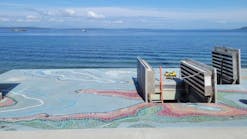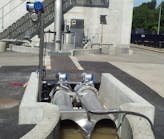About the author:
Metropolitan Ind. Inc., www.metropolitanind.com, 815-886-9200
Local municipalities and water authorities have a responsibility to their local community to guarantee that the freshwater supply needed to meet daily demands is always available. But substantial population growth and unintentional overuse have affected the supply of potable water and innovative ways are needed to preserve and protect water systems to ensure the supply of potable water will always be safe and able to meet the need of the public.
Water reclamation, the process of sanitizing wastewater so that it is safe for non-potable use, offers communities a solution for saving their potable water supply while benefiting the environment and their economy, as well.
Volume, Time & Space
The cities of Durham and Cary, North Carolina, wanted to reduce the maximum daily need of potable water in effort to increase the reliability of the cities’ drinking water supply while also buying more time before needing to expand the physical space of the treatment facility.
The cities were equipped to deliver potable water through water mains throughout the towns and had separate mains to distribute non-potable water for alternate uses. In these types of dual plumbed communities, potable water can be used as a backup for the non-potable supply. Using reclaimed water—with the potable water supply as a backup for unexpected non-potable water interruptions—increased the risk for cross-contamination.
With the safety of the community water supply being the main priority, the design engineers asked Metropolitan Ind. for its recommendation.
Pump Solution
Metropolitan Ind., along with the project specifiers, followed the regulatory guidelines to provide a positive means of backflow prevention by using an air gap break tank as a method for maintaining compliant cross-connection control. The project also required pumps to help repressurize the facilities’ water supply downstream of the air gap break tank. Installed were the trusted multi-stage centrifugal pumps as their operations are stable over a wide range of flows. The typical selections for this pump will have a 10:1 turn-down ratio.
These air gap break tank solutions are customized to meet the unique needs of project partners. However, factors—i.e., backflow prevention, turbulence, and entrained air control—always need to be considered when sizing any air gap break tank project. They are available for indoor and outdoor use and are manufactured as fully integrated and prefabricated packages in Metropolitan’s on-site facility.
History of Experience
This experience with water movement applications highlights an understanding of the needs associated with the delivery of both potable and non-potable water. The Metropolitan team of engineers, designers, and application specialists are well-versed in creating solutions that meet the intended goals of a community looking to implement water reclamation.
Metropolitan remains diligent in helping municipalities across the nation succeed in water conservation goals. By staying on top of water conservation trends, understanding federal guidelines, and developing innovative technology, its team offers the high-level support needed for a successful water reclamation project. Its solutions and guidance will meet the regulatory guidelines and help protect any community at large.



